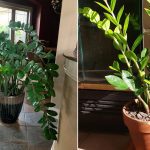Orange Spider Plant care and maintenance is easy—all you need is the perfect water balance and the right sunlight spot!
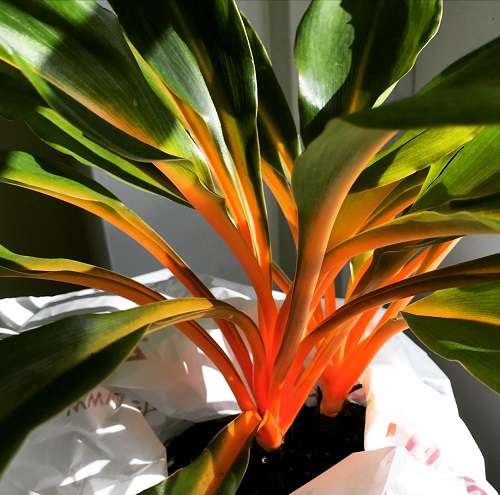
If the regular yellow-green stripes of your spider plant don’t please you anymore, try growing an orange spider plant with this informative guide!
- Botanical Name: Chlorophytum Orchidastrum Fire
- USDA Zones: 9-11
- Popular names: Orange Spider Plant, Spider Plant ‘Orange’, Mandarin Plant
- Light: Indirect or bright, but not direct sunlight.
- Known for air-purifying qualities
What is Orange Spider Plant?
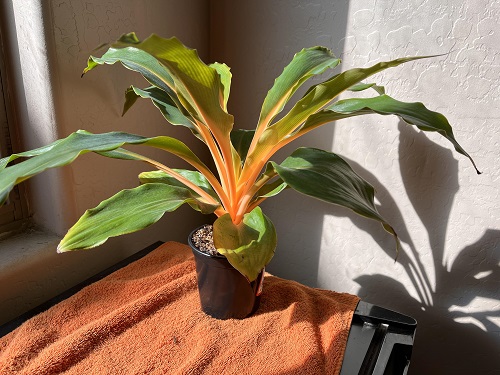
The Orange Spider Plant is a colorful herbaceous perennial loved for its striking long, narrow leaves that fan out in a rosette pattern. Unlike the typical green and white striped spider plant, this variety features a bright orange-yellow tint that pretty much validates its popularity. It can reach up to 2 feet in height and spread 2-3 feet wide, making it a substantial yet manageable addition to your home.
This versatile plant thrives in pots or hanging baskets and even in vertical gardens, depending on how wisely you plant it. Plus, it is potent in cleaning the indoor air, making it a functional addition to your home!
Orange Spider Plant Flowers
While few are aware that this plant blooms, the orange spider plant is adorned with small white flowers that blossom on elongated stalks. While these flowers may not be overly showy, their delicate, star-like shape, each about ¼ inches in size, contributes a subtle charm to the plant.
After flowering, the plant develops tiny spherical seedpods. While the blooms aren’t notably fragrant, they carry a faintly sweet aroma that you may find quite pleasant. However, watching this plant in full bloom is a rare sight that mostly occurs in the warmer months.
Ideal Pot Size
Like most indoor plants, overwatering is the biggest threat when it comes to tending them, and choosing the perfect pot plays a major role here. The best bet is to pick a pot about 2 inches bigger than the plant’s root ball. If measuring the root balls seems tricky, you can start with a 4-6-inch pot for younger plants and then upgrade its size as it grows.
Considering the plant’s versatility and ease of growth, you can pick any material, from fancy ceramics to permeable terracottas, as long as you’ve drilled enough drainage holes into it.
Orange Spider Plant Propagation
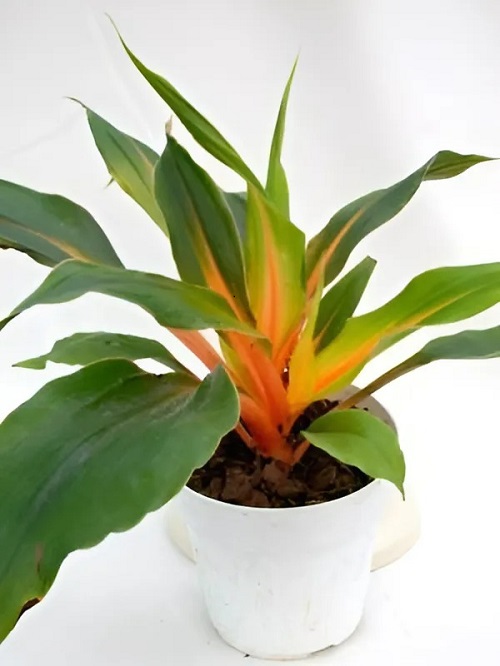
The Orange Spider Plant is simple to propagate using pups; here’s how:
- Look for a spiderette—a small offset from the main plant—with at least one or two small roots. These are usually found dangling from the mature plant, ready to be independent.
- You’ll need a small pot filled with a well-draining potting mix. A mix of half peat and half perlite or sand works well for spider plants because it ensures good drainage and aeration.
- Place the pup in the pot, ensuring the roots are well covered with soil, but the base of the plantlet is just above the soil surface. Press the soil down gently around the roots to secure the plant.
- Water the newly potted spiderette thoroughly right after planting, allowing excess water to drain away.
- Now, place the pot in a spot with bright, indirect sunlight. Keep an eye on the plant over the next few weeks. If the leaves begin to turn pale or the tips brown, adjust your watering routine or the plant’s location.
Orange Spider Plant Care
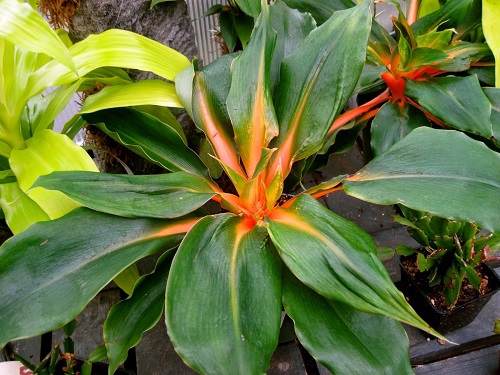
Light
This plant does best in bright, indirect sunlight. But that does not mean a spot near a west or south-facing window where the harsh rays, particularly in the summer, can scorch its leaves. Consider filtering the sunlight with a sheer curtain or positioning the plant at least half a meter away from the window to protect it. A north- or easy-facing window would rather be a better choice with lesser hassle.
This plant really struggles in low light; its vibrant orange stems will begin to fade if it doesn’t get enough light. During the darker winter months, you might need to relocate your plant to a brighter spot that can provide the light it needs to maintain its colorful appearance and health.
Soil
Though the Orange Spider Plant isn’t too fussy about its soil mix, using a well-draining, high-quality mix will ensure its healthy growth. The right blend would be mixing equal parts of potting soil, peat moss, and perlite or sand with a tablespoon of compost to provide the ideal balance of moisture retention and nutrients.
Water
There is no specific rule for watering these plants. Just touch the top layer of the soil and water when it is dry to the touch. And when you do so, water the plant thoroughly until it drains out from the bottom, providing sufficient moisture to the roots without leading to wet feet.
Temperature and Humidity
It prefers temperatures between 60-75°F (15-24°C) and can tolerate as low as 40°F (4°C) for short periods. Also, the plant prefers high humidity that can be mimicked by placing pebble trays or humidifiers near the plant.
Also, remember that these plants don’t appreciate fluctuations in their environment and would start showing up signs like brown edges and slow growth.
Fertilizer
The Orange Spider Plant benefits from monthly fertilization during the growing season (spring and summer). A balanced, water-soluble fertilizer can be used at 1/4th of the recommended strength. Avoid fertilizing during the winter months, as that could shock your plant.
Basically, feeding your plant two times a year would do the trick, and over-fertilizing would inevitably lead to root burn and salt buildup, which would also cause brown tips or brown spots on leaves.
If you know that your plant is already stressed, that is, if it’s soaking wet or bone dry, do not fertilize it.
Pruning
The Orange Spider Plant showcases amazingly thick foliage that does not require frequent pruning but can benefit from the occasional trimming of yellow or brown leaves. To promote bushier growth, pinch back the tips of the stems. On a monthly basis, you can remove spent old leaves from the base of the plant that turns yellowish as newer foliage starts crowding the older.
You must also always ensure that you keep your pruning tools sharp and clean before starting to prune.
Major Troubleshooting Tips
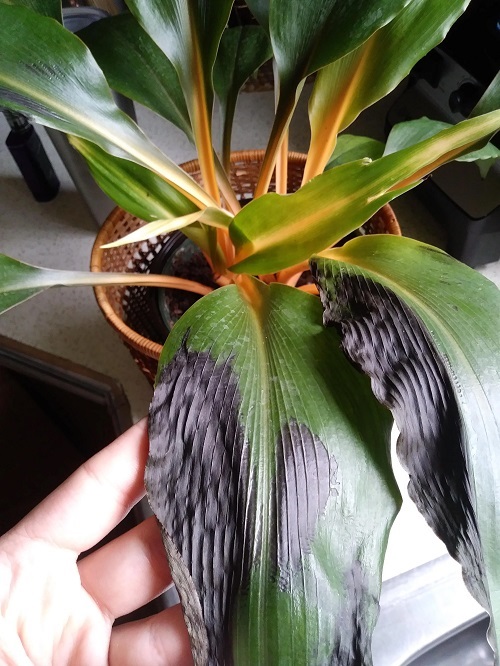
- If your plant’s leaves are wilting or turning yellow, it could be a sign of watering issues or root rot. First, check the moisture level of the soil. If it’s soggy, hold off on watering and let it dry out a bit to see if the plant recovers. For root rot, you’ll need to take a more hands-on approach: remove the plant from its pot, cut away the rotted roots, and replant it in fresh, well-draining soil.
- Leaves that curl or feel crispy can be a cry for help due to low humidity, too much direct sunlight, or pest infestations. Boosting humidity around the plant can sometimes be as simple as misting it regularly or placing it on a humidity tray made with water and pebbles. If the light is too intense, move your plant to a spot with filtered light, or drape a sheer curtain to soften direct sunlight. Don’t forget to inspect for pests as well; a treatment with insecticidal soap or neem oil can help safeguard your plant.
- Leggy stems or sparse growth often indicate inadequate light. Try relocating your plant to a brighter area or use artificial lights to supplement natural light. If your plant looks overcrowded, it might also be time to repot it into a larger container to give it more room to grow.
- While the Orange Spider Plant is relatively pest-resistant, it’s not immune. Common culprits like spider mites or mealybugs can still pose a threat. Treating the plant with insecticidal soap or neem oil can effectively combat these pests. Also, isolating the affected plant is crucial to prevent the pests from spreading to your other greenery.



